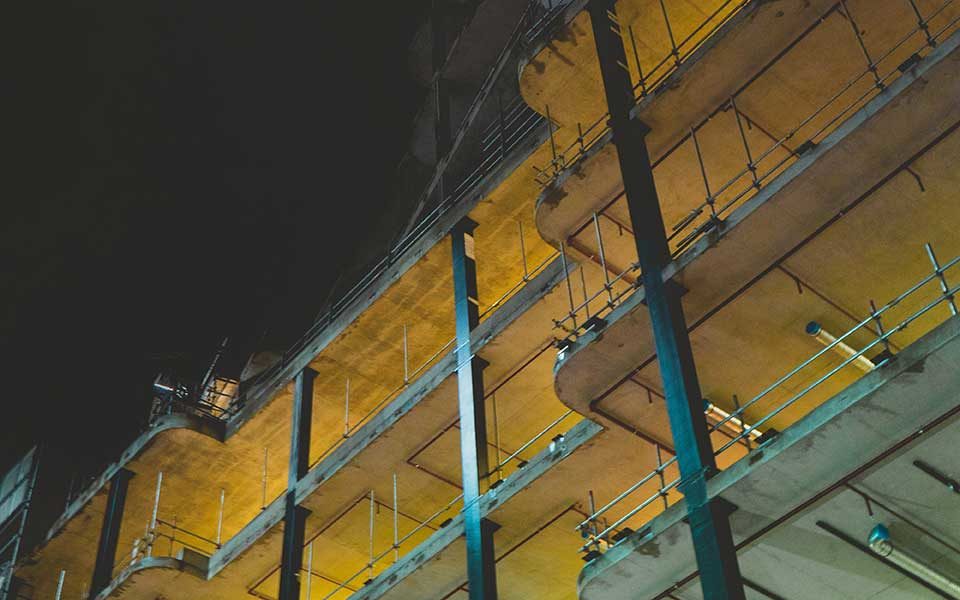Contractors, COVID and the CARES Act: What You Need to Know
In late 2017 Congress signed into law the Tax Cuts and Jobs Act (TCJA), which significantly changed the accounting and tax planning landscape for contractors and construction companies. Much like having to retrofit a 100-year-old building to meet today’s stringent building and safety codes, accounting professionals had to look at each project from new angles to determine how best to redesign their client’s tax and accounting framework. Fast forward to 2020, and the world’s foundation starts to crumble. Part of the government’s response was the signing into law of the Coronavirus Aid, Relief, and Economic Security Act, known as the CARES Act on March 25, 2020. Among other things, it included many technical corrections to items enacted in TCJA which can provide significant benefits to contractors, construction companies, and real estate professionals.
Qualified Improvement Property
When the TCJA was signed into law, an oversight by the IRS removed an important aspect of the code known as qualified leasehold improvement property. As a result, improvements were required to be depreciated over 39 years as opposed to current expensing. The CARES Act rectified this by creating a new property class known as Qualified Improvement Property.
If an improvement meets the definition of qualified improvement property, it is eligible to be depreciated over a 15-year period and qualifies for 100% bonus depreciation in the year placed in service. This rule is retroactive to property placed in service after December 31, 2017. There may be significant opportunities for taxpayers to amend prior year returns for 2018 and 2019 and accelerate depreciation on large expenditures.
For example: Let’s say a contractor spends $50,000 to renovate the interior of an existing office space. Under TCJA, the company would only be able to deduct $1,282 per year and would take this same depreciation deduction for the following 38 years. The contractor may never see the full tax benefit of the expenditure. Under the CARES Act, the contractor could deduct $50,000 in the year the renovations are made, recognizing the full tax benefit immediately.
To meet the definition of qualified improvement property, the property /improvement must be:
- Made to an interior portion of a nonresidential building;
- Performed after the building is already in service;
- Made by the taxpayer (property owner); and
- Placed in service after December 31, 2017.
Of course, the tax code is never this simple, and it is best to discuss improvements with your tax specialist to see if expenditures meet this new rule.
More Business Interest Expense Allowed
Interest is a very common expense in the construction trade. Introduced by TCJA, IRC section 163(j) imposes limitations on the ability of many companies to take a full current year tax deduction for business interest expense.
Under TCJA, deductible business interest expense was limited to:
- 30% of adjusted taxable income, plus
- 100% of business interest income, plus
- 100% of the taxpayer’s floor plan interest.
While there are exclusions to this new code section for small businesses and certain electing real property trades or businesses, the intent of this code section was to limit interest deductions.
The CARES Act temporarily and retroactively increases the limitation on the deductibility of interest expense from 30% to 50% for tax years beginning in 2019 and 2020. This change allows for greater deductions and an opportunity may exist to amend filed returns in order to take advantage of larger deductions.
Increase to Business Loss Limitations
Under TCJA, non-corporate taxpayers were subject to business loss limitations. Starting in 2018, business losses were limited to $500,000 ($250,000 if married filing separately) in the current year. The excess losses would be carried over to the following years.
Under the CARES Act, this limitation has been removed for tax years 2018, 2019 and 2020. This may pose a significant savings opportunity, and as previously mentioned, businesses should seek to maximize losses in 2020, as well as review prior filings for opportunities to amend.
Net Operating Loss Changes
Due to the cyclical nature of a contractor business, Net Operating Losses (NOLs) can occur. This is a situation that arises when the net business activities of a contractor result in an overall loss. Although contractors and construction companies have had a string of good years recently, those with losses may have been adversely affected by TCJA.
The TCJA modified the rules surrounding NOLs by limiting utilization of post-2017 losses to 80% of taxable income. This limitation could result in a tax, even if a contractor was in a loss carryover position. Additionally, under TCJA, NOLs could not be carried back to prior years.
The CARES Act temporarily modified these restrictions by removing the 80% limitation. Plus, in an effort to get much needed cash into the hands of businesses incurring losses, the CARES Act allows NOLs generated in years 2019 and 2020 to be carried back five years. Since tax rates were higher in years 2014-2017, it’s likely beneficial to carryback any post-2018 losses to an earlier year in order to obtain a refund. Businesses should seek to maximize losses in 2020 and review prior filings for opportunities to amend and/or carryback losses.
Estate Planning – Don’t Wait!
TCJA introduced a doubling of the lifetime exemption to $11,580,000 per individual. This is still the current exemption which is set to expire at the end of 2025. There has been speculation that this exemption amount may be lowered due to the current economic crisis. Therefore, estate planning should be addressed immediately, as there may be a limited opportunity for families to save gift and estate taxes. The ability to transfer a significant portion of one’s wealth free of the gift and estate tax is an often overlooked tax planning item.
With the uncertainty of the economy of this past year, many construction companies may be looking at reduced valuations, which would allow an even larger portion of a contractor’s assets to be passed onto the next generation with little to no gift tax expense.
For example: Assume a contractor’s estate is worth $15,000,000. Utilizing the current lifetime exemption, the approximate federal estate tax would be approximately $1,400,000. If this exemption reverts to pre-TCJA amounts, the same contractor’s estate would be subject to federal estate taxes of close to $3,600,000. If this contractor had only acted earlier, and gifted some assets or created trusts, etc., the contractor and his family could have saved approximately $2,200,000 in taxes.
To make this planning even more beneficial, the above exemptions are doubled for married couples. That means for married couples, the current lifetime exemption is $23,160,000 which could produce tax savings of $4,400,000 if actions are properly taken before the law changes.
There are many different structures that can be implemented to achieve this result, and the first step is to have the discussion with your trusted advisor about your long-term wishes and how best to structure your estate planning to meet these needs.
Corporate Charitable Deduction Limit
Calendar year 2020 has been filled with unfortunate news. During this year, charities have worked tirelessly to rise to the aid of many people in different situations. To help encourage corporate philanthropy, the IRS has temporarily increased the corporate charitable deduction limit from 10% to 25% of taxable income for 2020.
The Final Walk-Through
The last few years have arguably contained more tax rule changes than the prior two decades and, as such, there are a myriad of items to consider. The above are some of the more notable and wide-reaching items with the potential to greatly impact contractors and should be at the forefront of their discussions with their trusted advisors. Please be sure to contact your Marcum tax specialist to discuss planning opportunities that can be taken now and how best to make the current tax landscape work for you.







